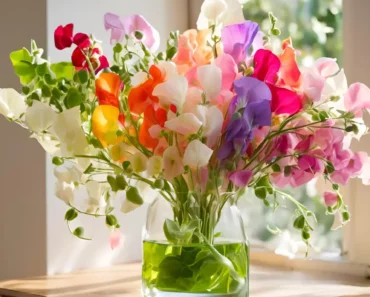A vibrant flower bed can transform any yard from ordinary to extraordinary, adding bursts of color, inviting pollinators, and creating a focal point that enhances your home’s curb appeal and your personal enjoyment of the outdoor space. While the thought of creating a new garden bed from scratch might seem daunting, especially for novice gardeners, the process can be broken down into a series of manageable steps. Knowing how to make a flower bed correctly from the start sets the stage for healthy plants and beautiful blooms for seasons to come. It’s about thoughtful planning and proper soil preparation.
Creating a new flower bed offers a wonderful opportunity to express your creativity and connect with nature. Whether you envision a formal border, a whimsical cottage garden patch, or a simple island of color in your lawn, the foundational steps are largely the same. It’s a rewarding project that can be accomplished with basic tools and a bit of effort, yielding results that bring continuous joy.
This comprehensive guide will walk you through how to make a flower bed in 7 simple, actionable steps. From choosing the perfect location and designing your bed’s shape to preparing the soil and selecting your first plants, we’ll cover everything a beginner needs to know to get started successfully. Let’s dig in and cultivate the garden of your dreams!
Why Create a New Flower Bed? The Benefits Abound
Before we delve into the “how-to,” it’s worth appreciating the many reasons why adding a new flower bed to your landscape is a worthwhile endeavor. The benefits extend beyond mere aesthetics, contributing to your well-being and the local ecosystem.
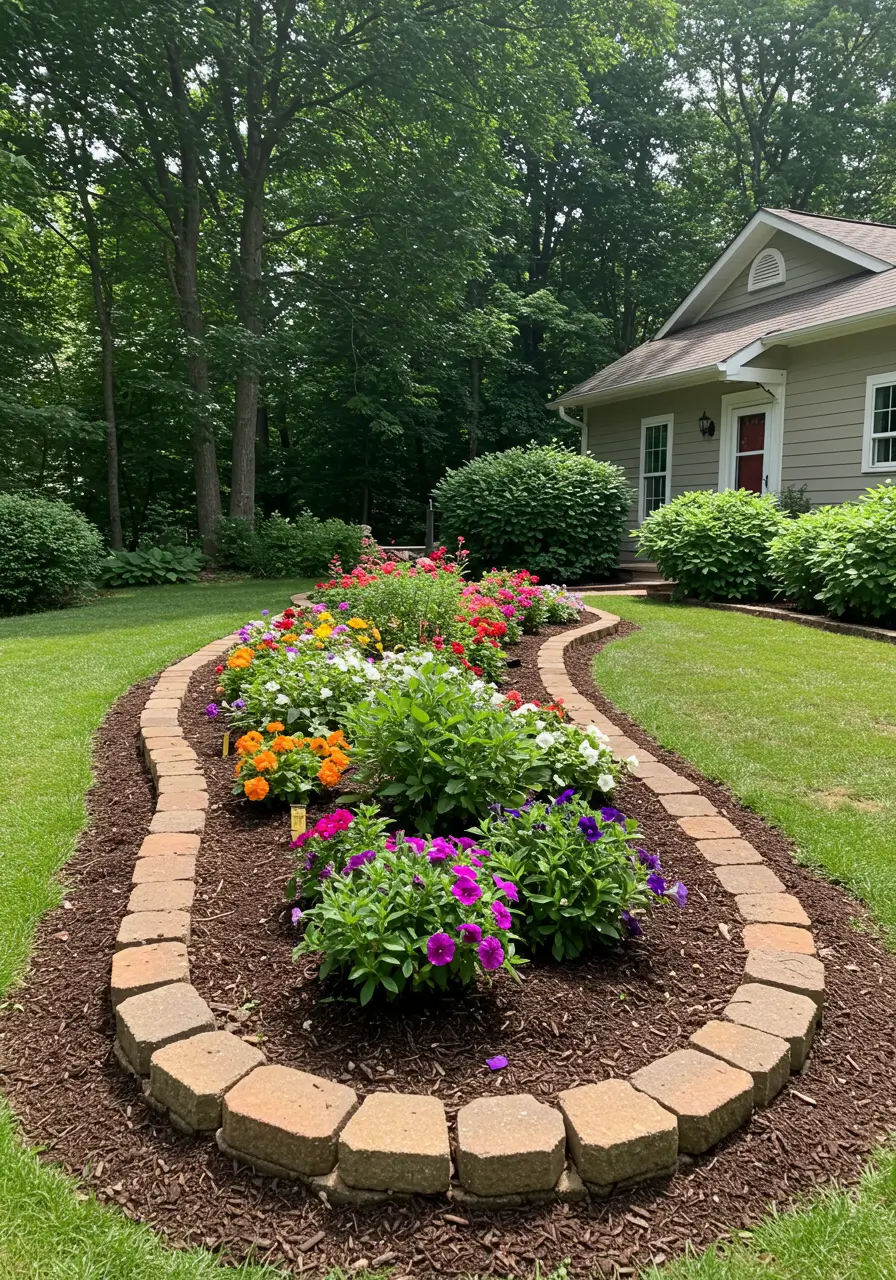
Enhanced Curb Appeal and Property Value
Visual Impact:
A well-designed and maintained flower bed instantly boosts the visual appeal of your home. Colorful blooms and lush foliage create a welcoming and attractive environment, whether it’s in the front yard greeting visitors or in the backyard creating a private oasis.
Increased Value:
Thoughtful landscaping, including attractive flower beds, can significantly increase your property’s perceived and actual market value. It demonstrates care and attention to detail.
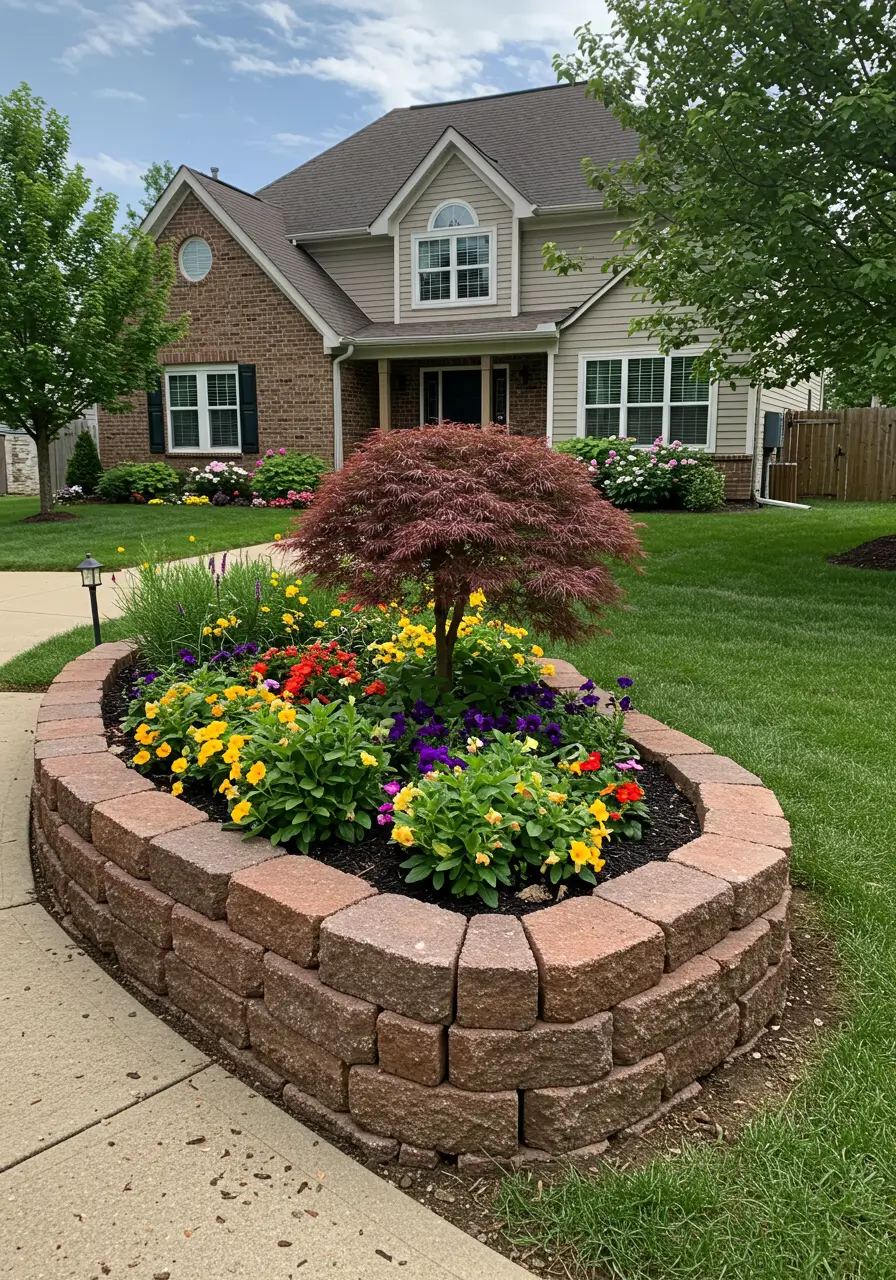
Personal Enjoyment and Stress Reduction
A Source of Beauty:
Having beautiful flowers to look at brings daily joy and can be a source of pride. The changing colors and forms throughout the seasons provide ongoing visual interest.
Therapeutic Activity:
The act of gardening itself – planning, planting, tending – can be incredibly therapeutic and stress-relieving. Working in your flower bed offers a chance to connect with nature, get some light exercise, and focus on a creative, nurturing task.
Attracting Pollinators and Beneficial Insects
Supporting Biodiversity:
By choosing a variety of flowering plants, especially native species, your flower bed can become a haven for bees, butterflies, hummingbirds, and other important pollinators. This supports local biodiversity and ecosystem health.
Natural Pest Control:
Some flowering plants attract beneficial insects (like ladybugs or lacewings) that prey on common garden pests, contributing to natural pest control in your yard.
Opportunity for Creativity and Learning
Design Expression:
A new flower bed is a blank canvas for your horticultural creativity. You can experiment with color combinations, plant textures, heights, and bloom times to create a unique and personal display.
Gardening Knowledge:
The process of creating and maintaining a flower bed is a fantastic learning experience, teaching you about soil, plant needs, seasonal changes, and the rhythms of nature.
Improving Problem Areas in the Yard
Solving Landscape Issues:
A well-placed flower bed can help solve landscape problems, such as masking an unsightly foundation, defining an edge, creating privacy, or adding interest to a bland, empty space. It can also be used to manage slopes or improve drainage in specific spots if designed correctly.
Understanding these benefits provides motivation and helps clarify your goals as you learn how to make a flower bed.
Step 1: Planning Your Flower Bed – Location and Design
Thoughtful planning is the cornerstone of a successful flower bed. Before you even pick up a shovel, taking the time to consider location, size, shape, and the types of plants you envision will save you effort and ensure your bed thrives.
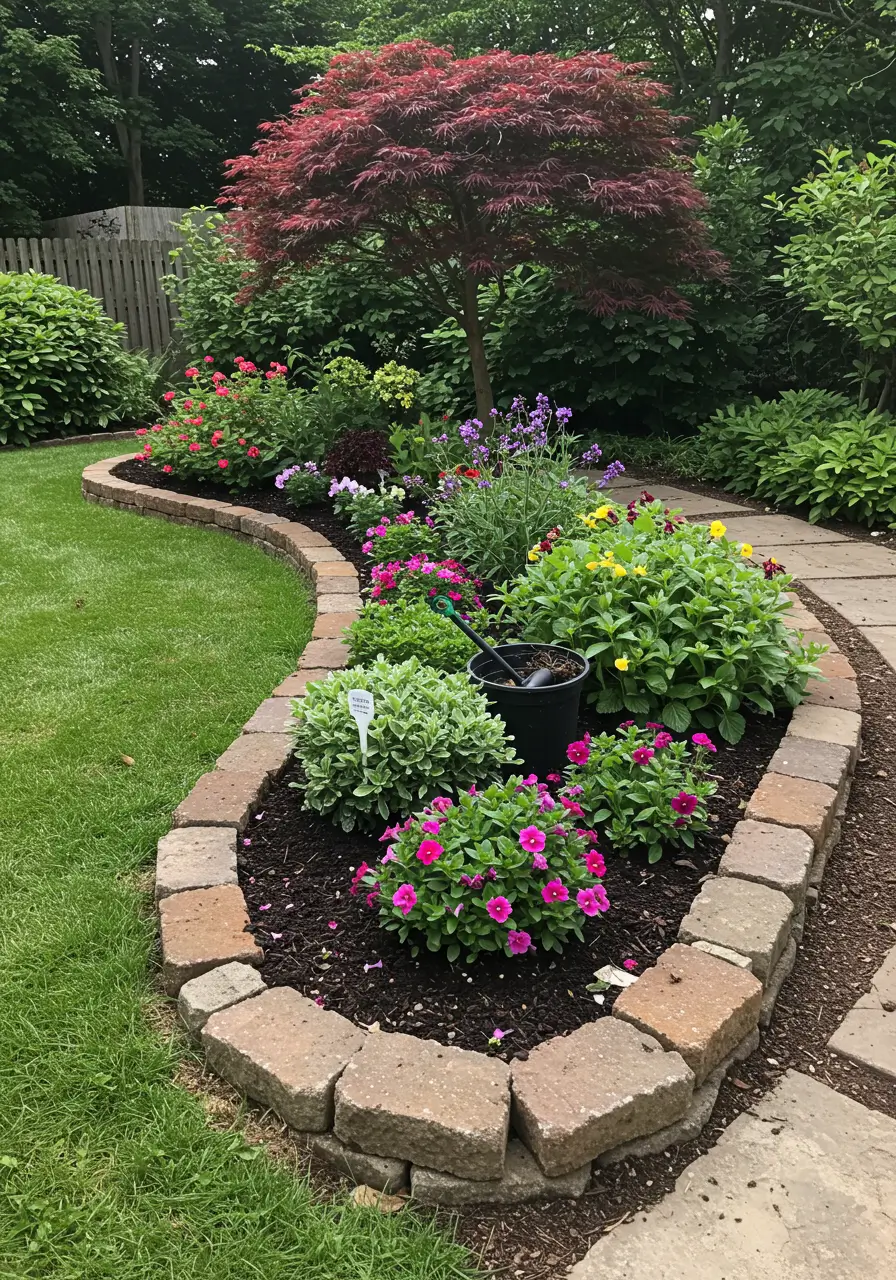
Choosing the Right Location
The success of your plants hinges on placing them in an environment where their needs are met.
Sunlight Exposure (Crucial!):
This is the most important factor. Observe the potential locations in your yard throughout the day to determine how much sun they receive:
– Full Sun: At least 6-8 hours of direct sunlight per day. Most annual and many perennial flowers thrive in full sun.
– Partial Sun/Partial Shade: Approximately 4-6 hours of direct sun, often morning sun and afternoon shade, or dappled sunlight through trees. Many perennials and some annuals prefer this.
– Full Shade: Less than 4 hours of direct sun, or bright, indirect light. Best for shade-loving plants like hostas, ferns, impatiens.
– Choose your plants after you’ve assessed the sun exposure of your chosen spot, or choose a spot based on the sun needs of plants you wish to grow.
Drainage:
Avoid areas where water tends to pool after rain, as soggy soil can lead to root rot for most plants. Look for well-drained spots. If an area is chronically wet, you may need to consider building a raised flower bed or choosing bog-tolerant plants.
Proximity to Water Source:
New plants will need regular watering until established. Choose a location reasonably close to a hose spigot or where you can easily carry water.
Visibility and Impact:
Consider where the flower bed will have the most visual impact – near your home’s entrance, along a walkway, as a focal point viewed from a window or patio?
Accessibility for Maintenance:
Ensure you can easily reach all parts of the bed for planting, weeding, and deadheading without excessive stretching or trampling other plants.
Determining Size and Shape
Scale and Proportion:
The size of the flower bed should be in proportion to your house and overall yard. A tiny bed can look lost in a large yard, while an oversized bed might overwhelm a small space.
Reachability:
For beds accessible from one side (e.g., against a fence or wall), aim for a maximum depth of 2-3 feet so you can easily reach the back. For island beds accessible from all sides, a width of up to 4-6 feet is manageable (reaching 2-3 feet from each side).
Shape Options:
– Formal: Rectangles, squares, or perfect circles offer a classic, structured look.
– Informal/Curvilinear: Gentle curves, kidney shapes, or free-form designs create a more natural, flowing aesthetic. Curved beds are often considered more visually appealing and can be easier to mow around.
Start Small (If a Beginner):
If you’re new to gardening, it’s often wise to start with a smaller, more manageable bed. You can always expand it later as your confidence and experience grow.
Considering Plant Choices (Preliminary)
While detailed plant selection comes later, have a general idea of what you want to grow, as this influences bed design.
Plant Height and Layering:
Envision layers – taller plants at the back (for beds viewed from one side) or in the center (for island beds), with medium-height plants in the middle, and shorter edging plants at the front. This creates depth and visual interest.
Color Scheme:
Think about color combinations you like – monochromatic (shades of one color), complementary (opposites on the color wheel like blue/orange), or analogous (colors next to each other like red/orange/yellow).
Bloom Time:
Aim for a succession of blooms throughout the growing season by choosing plants with different flowering times.
Thorough planning at this initial stage of learning how to make a flower bed significantly increases your chances of creating a beautiful and thriving garden space.
Step 2: Outlining and Defining Your Flower Bed
Once you’ve decided on the location, general size, and shape for your new flower bed, the next step is to physically mark out its perimeter on the ground. This visual outline allows you to fine-tune the design before any digging begins and ensures you create the exact form you envision.
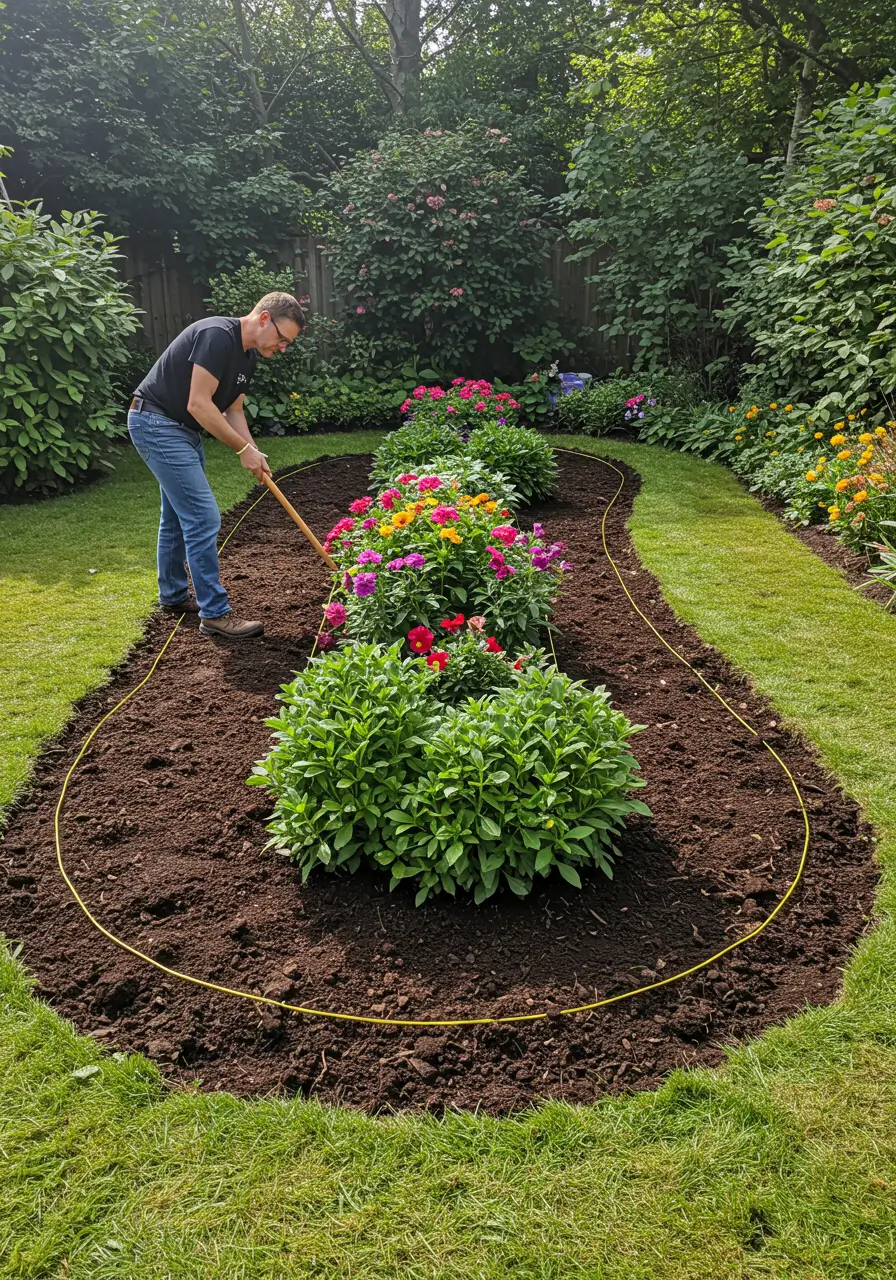
Tools for Outlining
Several simple tools can be used for this task:
Garden Hose:
A flexible garden hose is excellent for creating smooth, flowing curves for informal bed shapes. Lay it on the ground and adjust its position until you achieve the desired outline. It’s easy to tweak and visualize.
Rope or String:
Useful for straight lines (for formal rectangular or square beds) when stretched taut between stakes. Can also be used for curves, though less flexible than a hose.
Landscape Spray Paint (Marking Paint):
Once you’re happy with the hose or rope outline, you can use landscape marking paint (often bright orange or white, available at hardware stores) to create a more durable, visible line directly on the grass or soil. This is helpful if the hose/rope might get moved. Ensure it’s water-based and non-toxic if using on lawn you plan to keep elsewhere.
Flour or Powdered Lime:
For a temporary, eco-friendly marking option, sprinkle a line of flour or powdered lime along your hose/rope outline. This is easily visible for cutting but washes away with rain.
Stakes:
Use stakes at corners for straight-edged beds or at key points along curves to help guide your hose or string.
The Outlining Process
1. Start with a Rough Layout:
Place your hose, rope, or stakes roughly in the desired shape and size based on your plan.
2. Refine the Shape:
Step back frequently to view the outline from different angles – from your house windows, patio, driveway, or sidewalk. Adjust the curves or lines until you are satisfied with the visual balance and flow within your landscape.
– For curves, aim for broad, sweeping lines rather than tight, jerky ones, which look more natural and are easier to mow around.
– For straight lines, use your string and stakes, ensuring corners are square if desired (you can check with a carpenter’s square or the 3-4-5 triangle method for larger right angles).
3. Check Dimensions:
Once the shape looks good, use a tape measure to verify the width and length, ensuring it matches your planned dimensions and allows for comfortable reach to the center for maintenance.
4. Consider Mowing Access (If Adjacent to Lawn):
If your flower bed will border a lawn, consider how easy it will be to mow along the edge. Gentle curves are generally easier to navigate with a mower than sharp corners or very intricate shapes.
5. Finalize with Paint or Powder:
When you are completely happy with the hose/rope outline, carefully trace along it with landscape marking paint or flour/lime to create a clear cutting guide for the next step. If using paint, hold the can upside down and spray a consistent line.
Taking the time to accurately outline your flower bed is a crucial part of learning how to make a flower bed properly. It ensures the final result matches your vision and prevents having to redo work later. It’s much easier to adjust a hose than to re-dig an incorrectly shaped bed!
Step 3: Removing Sod or Existing Vegetation
Once your new flower bed is clearly outlined, the next crucial step is to remove the existing grass (sod) or any other vegetation within that defined area. This creates a clean slate for your new plants and prevents unwanted grass or weeds from competing with them for nutrients and water. Several methods exist for sod removal, each with pros and cons.
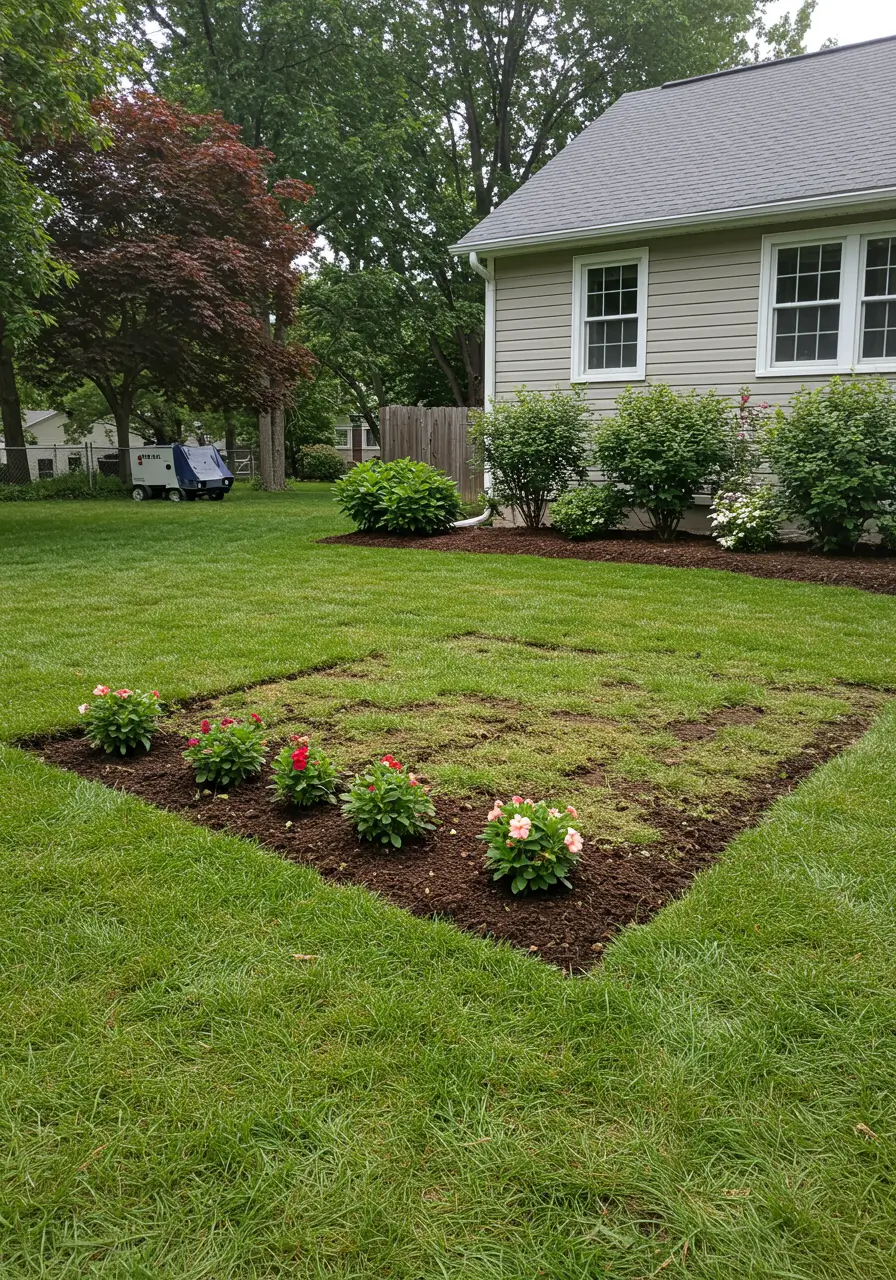
Method 1: Manual Sod Removal (Cutting and Lifting)
This is a common, albeit labor-intensive, method for smaller to medium-sized beds.
Tools Needed:
Sharp, flat-edged spade or a dedicated sod cutter (manual “kick” type or powered rental). A garden fork can help lift sections. Wheelbarrow for transporting sod.
Process:
– Moisten Soil (Optional but Helpful): If the ground is very dry and hard, lightly watering the area a day or two beforehand can make cutting easier. Don’t make it muddy.
– Cut the Outline: Using your spade or sod cutter, cut cleanly along the painted/powdered outline of your flower bed, penetrating about 1.5-2 inches deep (enough to get under the grass roots).
– Cut into Strips: Inside the bed area, cut the sod into manageable strips, roughly 1 foot wide.
– Lift the Sod: Slide the spade or sod cutter under one end of a strip, getting beneath the root layer. Pry or roll the sod strip up. For larger areas, a kick-style sod cutter makes this much faster by cutting and lifting strips as you push it.
– Remove and Dispose/Repurpose: Place the removed sod strips in a wheelbarrow. You can compost them (grass-side down to smother it), use them to patch bare spots elsewhere in your lawn, or dispose of them according to local yard waste guidelines.
Pros:
Immediate results – bed is ready for soil preparation right away. Removes most grass roots effectively.
Cons:
Physically demanding, especially for large areas or tough sod. Generates sod waste that needs to be dealt with.
Method 2: Sheet Mulching / Lasagna Gardening (Smothering)
This is a less labor-intensive, more eco-friendly method that improves soil over time but requires patience.
Materials Needed:
Cardboard (plain brown, remove all tape and labels), nitrogen-rich organic matter (grass clippings, coffee grounds, vegetable scraps – optional), compost, mulch (wood chips, shredded leaves).
Process:
– Mow Low: Mow the grass within the outlined flower bed area as short as possible.
– Lay Cardboard: Cover the entire area with overlapping layers of cardboard, ensuring no gaps where grass can grow through. Wet the cardboard thoroughly to help it stay in place and start decomposing.
– Add Organic Layers (Optional): You can layer green materials (nitrogen) and brown materials (carbon) on top of the cardboard, like making a compost pile in place.
– Cover with Compost and Mulch: Add a thick layer (4-6 inches) of compost directly on top of the cardboard/organic layers, followed by a 2-3 inch layer of mulch.
Pros:
Minimal physical labor (no digging sod), improves soil structure and fertility as materials decompose, recycles cardboard. Very effective at killing grass and weeds over time.
Cons:
Takes time – several months (ideally 3-6, or even over winter) for the underlying grass to fully decompose before you can plant directly into the compost layer. Not suitable if you want to plant immediately. This is a key consideration when learning how to make a flower bed with this method.
Method 3: Solarization (Using Sunlight to Kill Vegetation)
Best for sunny areas and warm seasons.
Materials Needed:
Clear plastic sheeting (1-4 mil thick), rocks or bricks to hold edges down.
Process:
– Mow and Water: Mow the grass short and water the area thoroughly.
– Cover with Plastic: Lay the clear plastic tightly over the outlined flower bed area, burying the edges in the soil or weighing them down securely with rocks/bricks to trap heat.
– Wait: Leave the plastic in place for 4-8 weeks during the hottest part of summer. The sun’s heat trapped under the clear plastic effectively “cooks” the grass, weeds, and many soil-borne pests and pathogens.
Pros:
Kills grass, weeds, and some soil pests/diseases without chemicals. Relatively low physical effort after initial setup.
Cons:
Takes several weeks, requires a hot, sunny period to be most effective. Not aesthetically pleasing during the process. Plastic needs to be disposed of afterwards.
Method 4: Herbicide (Use with Caution)
Using a non-selective herbicide (like glyphosate-based products) to kill the grass.
Process:
Apply herbicide according to label directions. Wait for grass to die completely (usually 1-2 weeks). Dead sod can then be tilled in or removed (though removal is still somewhat laborious).
Pros:
Kills grass and roots effectively with less physical effort than manual removal initially.
Cons:
Involves chemicals (concerns for environment, pets, beneficial insects). Doesn’t improve soil. Requires waiting period before planting. Dead sod still needs to be dealt with. Many gardeners prefer to avoid herbicides if possible.
Choose the sod removal method that best suits your timeline, physical ability, environmental preferences, and the size of your planned flower bed. For most home gardeners wanting to plant relatively soon, manual removal or sheet mulching (if time allows) are common choices.
Read Also: Essential Garden Hand Tools
Step 4: Preparing and Amending the Soil – The Key to Healthy Plants
With the sod or existing vegetation removed, the next, and arguably most critical, step in how to make a flower bed is preparing the soil. Healthy soil is the foundation for thriving plants. Simply digging holes in compacted or nutrient-poor native soil will often lead to struggling flowers. Improving the soil structure and fertility is essential.
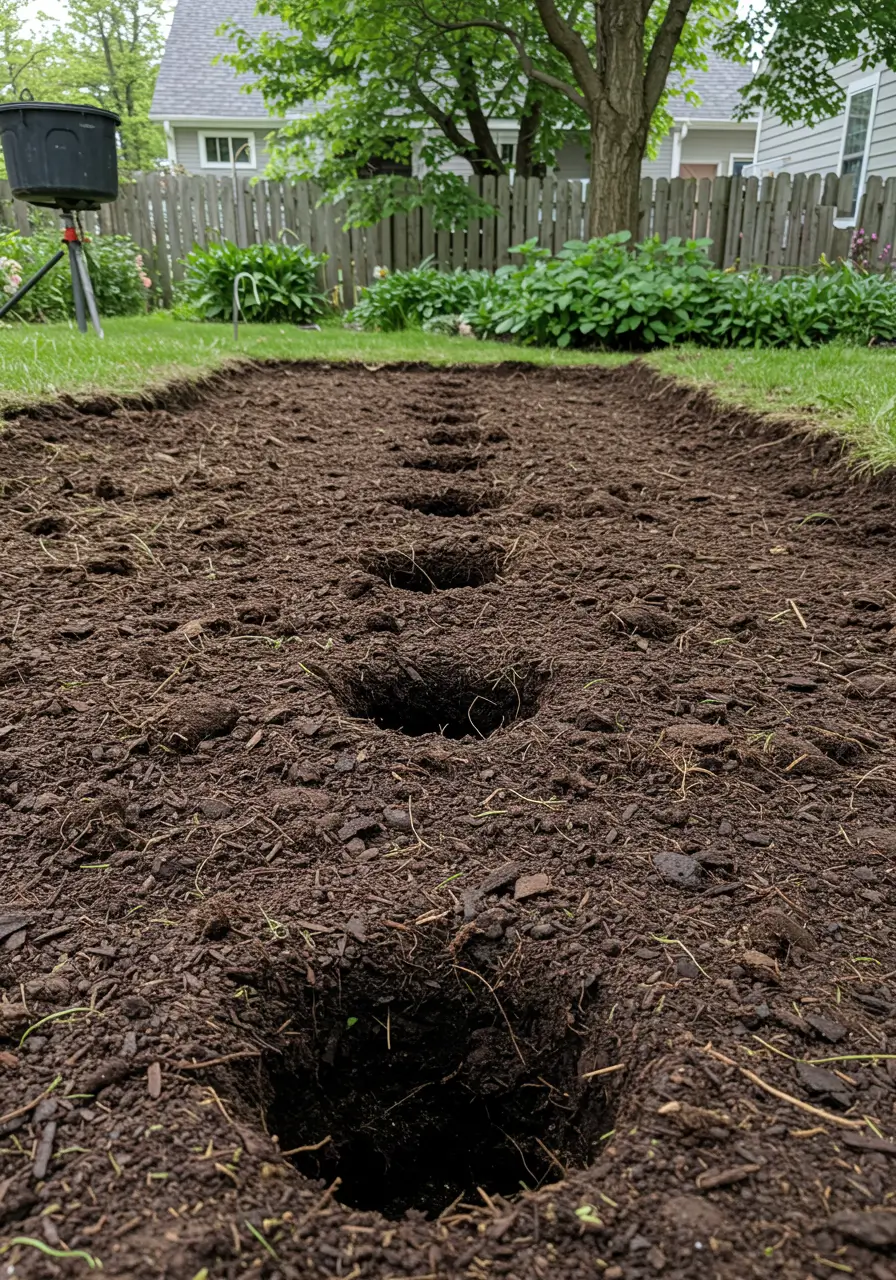
Understanding Soil Structure
Ideal garden soil for most flowers is loose, crumbly (friable), well-draining, yet able to retain some moisture, and rich in organic matter.
Common Soil Types:
– Clay Soil: Composed of very fine particles, holds moisture well (can become waterlogged), compacts easily, can be hard to dig when dry, nutrient-rich but nutrients may not be readily available.
– Sandy Soil: Composed of coarse particles, drains very quickly, doesn’t hold moisture or nutrients well. Easy to dig.
– Silty Soil: Particles are between sand and clay in size. Feels smooth. Can compact but generally fertile.
– Loam Soil: The ideal – a balanced mix of sand, silt, and clay, with plenty of organic matter. Good drainage and moisture retention.
Loosening the Existing Soil
After sod removal, the underlying soil might be compacted.
Tools:
Garden fork (best for breaking up compaction without overly disturbing soil layers), spade, or rototiller (for larger areas, use judiciously to avoid destroying soil structure).
Process:
– Digging/Forking: Work your way across the entire flower bed area, loosening the soil to a depth of at least 8-12 inches. If using a garden fork, insert it deeply and rock it back and forth to create air pockets and break up clumps. If using a spade, turn the soil over.
– Remove Obstructions: While digging, remove any large rocks, roots from nearby trees (if feasible without harming the tree), or construction debris.
Amending the Soil with Organic Matter (Crucial!)
This is the single most important thing you can do to improve almost any soil type. Organic matter improves soil structure, drainage, aeration, moisture retention, and nutrient availability.
Best Amendment: Compost
– What it is: Decomposed organic material (leaves, grass clippings, kitchen scraps, etc.). Rich in nutrients and beneficial microbes.
– Benefits: Improves clay soil by making it looser and better draining. Improves sandy soil by helping it retain moisture and nutrients. Adds slow-release nutrients for plants.
– Amount: Spread a generous layer of compost, typically 2-4 inches deep (or more for very poor soil), over the entire loosened bed area.
Other Organic Amendments:
– Well-Rotted Manure (Cow, Horse, Chicken): Excellent source of nutrients and organic matter. Must be well-aged or composted to avoid burning plants.
– Leaf Mold: Decomposed leaves; excellent soil conditioner.
– Peat Moss or Coco Coir: Improve moisture retention and soil structure, especially in sandy soils. Peat moss harvesting has environmental concerns; coco coir is a more sustainable alternative.
– Worm Castings: Highly nutrient-rich, excellent soil conditioner.
Incorporating Amendments:
Using your garden fork or spade, thoroughly mix the added organic matter into the top 6-10 inches of the loosened soil. Aim for a uniform blend. If using a rototiller, make shallow passes to incorporate the amendments without over-tilling.
Considering Soil pH and Fertilizers
Soil pH:
Most flowers prefer a slightly acidic to neutral soil pH (around 6.0 to 7.0). You can get a simple soil test kit from a garden center or send a sample to your local cooperative extension office for detailed analysis (which will also test nutrient levels).
– To Raise pH (make less acidic): Add garden lime (dolomitic or calcitic).
– To Lower pH (make more acidic): Add elemental sulfur, peat moss, or aluminum sulfate (use with caution).
– Amend pH gradually over time based on test results. Compost helps buffer pH.
Initial Fertilization (Optional):
If your soil test indicates specific nutrient deficiencies, or if your soil is very poor, you might incorporate a balanced, slow-release organic fertilizer into the flower bed during soil preparation. Compost itself provides many nutrients, so additional fertilizer may not always be needed initially, especially if you’ve added a good amount of compost. Avoid over-fertilizing.
Raking Smooth and Leveling
Final Touch:
After all amendments are incorporated, use a sturdy garden rake to smooth the soil surface, removing any remaining clumps or small stones.
Slight Crown (Optional):
You might want to rake the bed so it has a slight crown in the center (a few inches higher than the edges). This can help improve drainage away from plant crowns.
Let it Settle:
If possible, allow the prepared bed to settle for a few days (or even a week or two) before planting, lightly watering it once or twice. This helps consolidate the soil.
Investing time and effort into proper soil preparation is the secret to a successful, thriving flower bed and is a non-negotiable step when learning how to make a flower bed.
Step 5: Installing Edging for Definition and Containment
Once your flower bed soil is prepared, installing edging is a highly recommended step that adds a professional, finished look and serves several practical purposes. Edging creates a clear visual separation between your flower bed and adjacent areas like lawns or pathways, and helps keep soil and mulch contained.
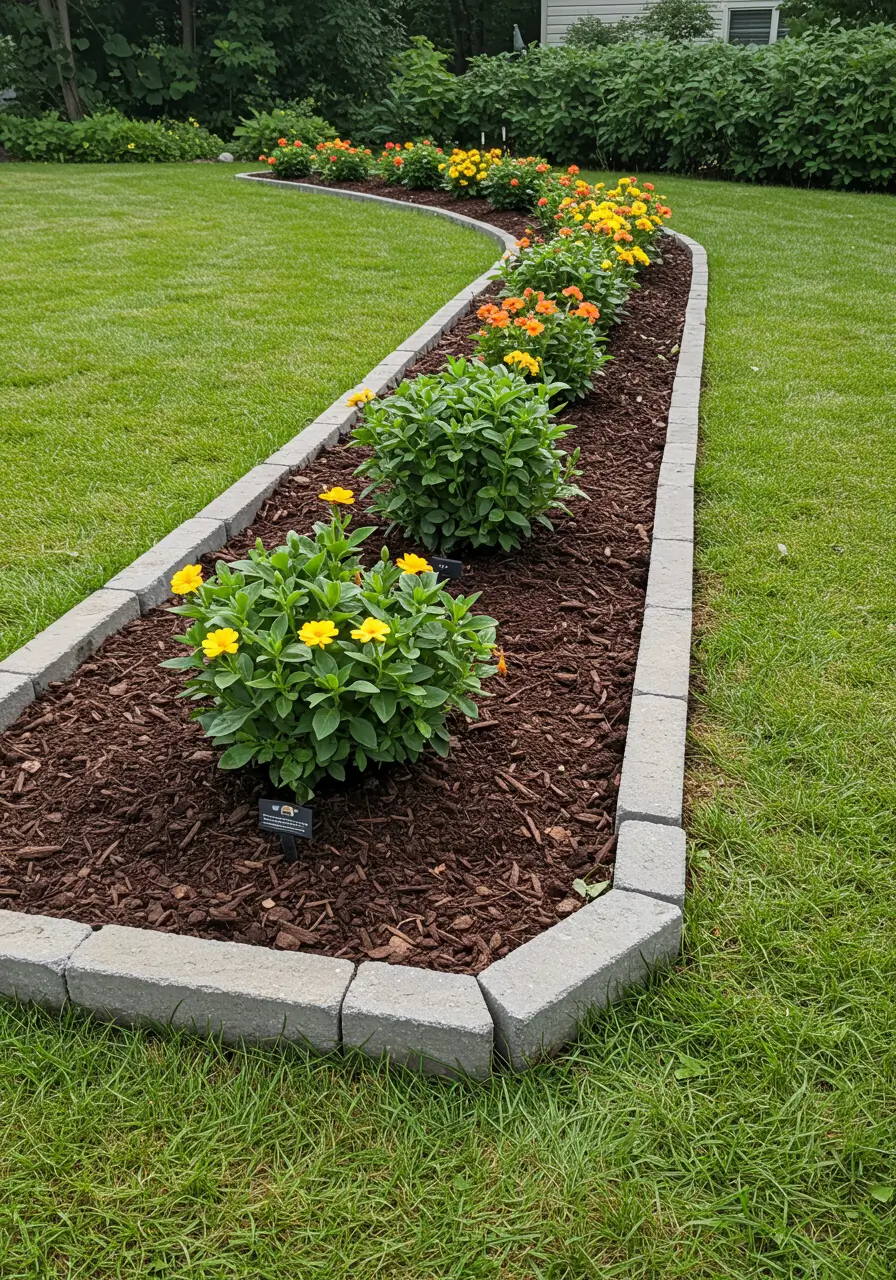
Benefits of Flower Bed Edging
Clean, Defined Look:
Edging creates crisp lines, making your garden look neat, tidy, and intentional. It frames the flower bed and highlights your plantings.
Grass and Weed Barrier:
A key function is to prevent lawn grass (especially creeping types) from invading your flower bed. This significantly reduces weeding chores along the bed’s perimeter.
Mulch and Soil Containment:
Edging helps keep your carefully prepared soil and mulch from washing or spilling out onto lawns or paths during heavy rain or watering.
Easier Mowing:
It provides a clear line to mow or trim against, protecting plants from accidental damage by lawnmowers or string trimmers and creating a neater lawn edge.
Common Types of Edging Materials
Many options are available, varying in cost, durability, ease of installation, and aesthetic.
Plastic Edging (Rolls or Strips):
– Pros: Inexpensive, flexible (good for curves), easy to install for DIYers, widely available.
– Cons: Can look less premium, may degrade or crack over time with UV exposure (quality varies), can sometimes heave out of the ground with frost. Needs to be installed properly with stakes.
Metal Edging (Steel, Aluminum):
– Pros: Very durable, creates a clean and crisp modern or traditional line, relatively discreet (thin profile), flexible enough for gentle curves, long-lasting. Steel can be painted or allowed to rust for a rustic look. Aluminum won’t rust.
– Cons: Can be more expensive than plastic, may require more effort to install (cutting metal, driving stakes into harder ground).
Brick or Paving Stone Edging:
– Pros: Very durable, classic appearance, wide variety of colors and styles to match patios or paths, can be set at lawn level for easy mowing over.
– Cons: More labor-intensive to install (requires digging a trench, leveling, potentially mortar for a permanent edge), can be more expensive depending on material.
Natural Stone Edging (Flagstone, Fieldstone):
– Pros: Beautiful, natural look, very durable, blends well with informal or cottage gardens.
– Cons: Can be expensive, labor-intensive to source and install (fitting irregular shapes), may shift over time if not well-set.
Wood Edging (Landscape Timbers, Planks):
– Pros: Natural look, can be inexpensive (especially if using reclaimed wood or simple planks), easy to cut and install for straight lines.
– Cons: Susceptible to rot and insect damage (especially untreated wood in contact with soil), requires replacement over time. Pressure-treated wood offers more longevity but raises chemical concerns for some.
Concrete Edging (Molded, Poured):
– Pros: Very durable, variety of pre-cast molded shapes and colors available, can be custom poured for continuous curves (professional installation often needed for poured).
– Cons: Can be heavy (molded sections), poured concrete is a larger project. Can look utilitarian unless choosing decorative options.
Installation Tips for Edging
Timing:
Install edging after soil preparation but before planting and mulching.
Dig a Trench:
For most edging types (except some very shallow plastic ones), dig a small trench along the defined flower bed outline to the appropriate depth for your chosen material. This helps set the edging securely and at the correct height.
Level and Height:
Ensure the top of the edging is level (or follows the contour of a slope consistently). The height relative to the lawn is important:
– Slightly Above Lawn: Helps contain mulch effectively.
– Flush with Lawn: Allows mowers to run over one wheel, reducing the need for string trimming.
Secure in Place:
Use stakes for plastic or metal edging. For brick or stone, backfill the trench with soil or gravel to hold them firmly. Polymeric sand can be swept into paver joints for a more permanent hold.
Adding edging is a step often skipped by beginners learning how to make a flower bed, but it significantly elevates the look and reduces long-term maintenance.
Step 6: Selecting and Planting Your Flowers
With your flower bed prepared and edged, the exciting moment arrives: choosing and planting your flowers! This is where your garden vision truly starts to come to life. Careful selection and proper planting techniques are vital for establishing healthy, thriving plants.
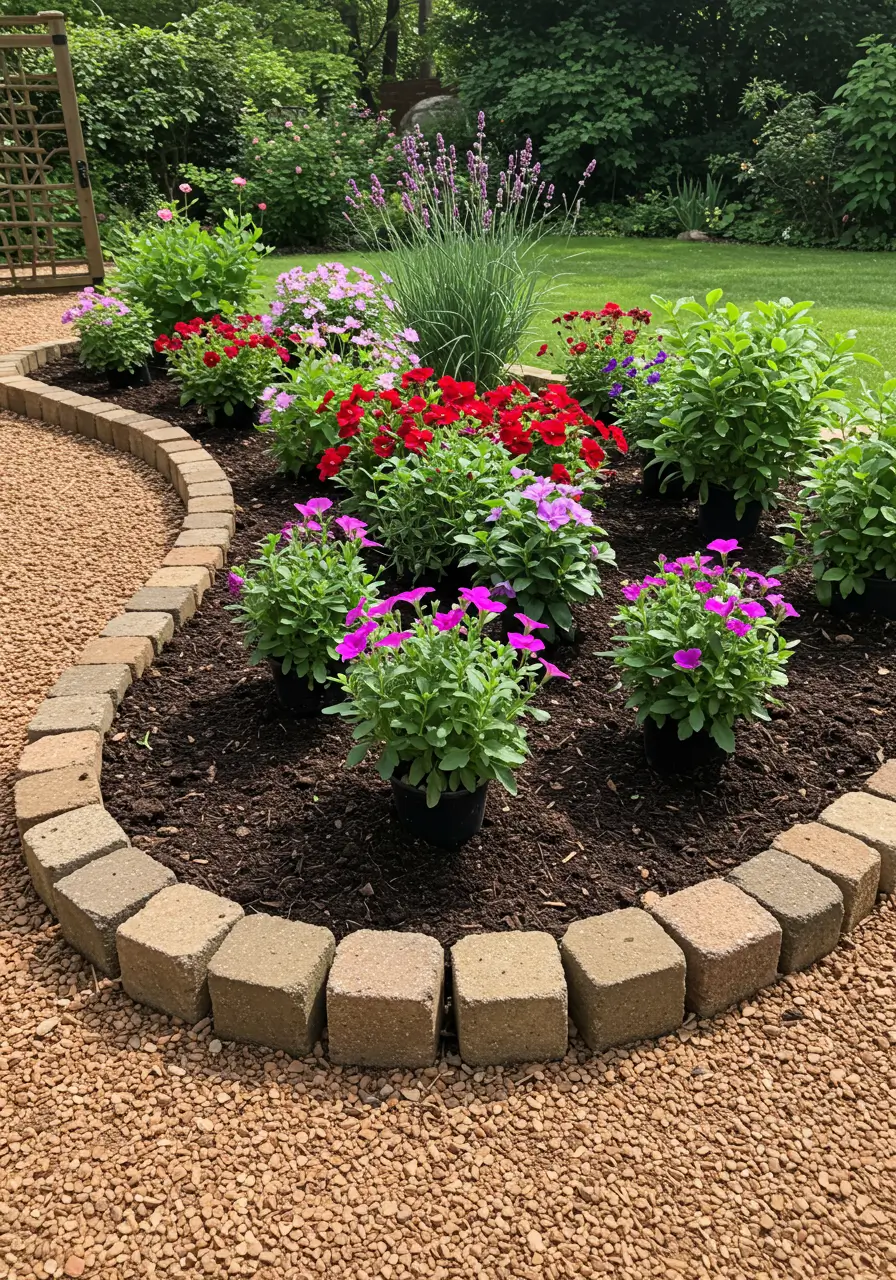
Choosing the Right Plants (Recap and Detail)
Refer back to your initial planning regarding sun exposure for the bed.
Match Plants to Conditions:
Select plants that thrive in the amount of sunlight your bed receives (full sun, part shade, full shade). Also consider your soil type (even after amending) and typical moisture levels.
Consider Mature Size and Spacing:
This is crucial! Read plant tags or research online to determine each plant’s mature height and width. Space plants according to their mature size, not their size in the nursery pot. Overcrowding leads to poor air circulation (disease risk), competition for resources, and a messy look. It’s tempting to plant closely for an instant full look, but resist!
Variety in Height, Texture, and Form:
Create visual interest by choosing plants with varying heights (tall background/center, medium middle, short front), different foliage textures (fine, bold, fuzzy, glossy), and diverse forms (upright, mounding, spreading, spiky).
Bloom Time Succession:
Select a mix of plants that bloom at different times throughout the growing season (spring, summer, fall) to ensure continuous color and interest in your flower bed.
Color Scheme:
Refer to your planned color palette. Consider how different flower and foliage colors will interact.
Annuals vs. Perennials (vs. Biennials/Shrubs):
– Annuals: Complete their life cycle in one season (e.g., petunias, marigolds, zinnias). Provide instant, long-lasting color but need replanting each year.
– Perennials: Live for multiple years, dying back in winter (in most climates) and regrowing in spring (e.g., hostas, coneflowers, daylilies). Form the backbone of many flower beds.
– Biennials: Live for two years, typically flowering in the second year (e.g., foxglove, Sweet William).
– Small Shrubs: Can provide structure, year-round interest, and often long bloom periods (e.g., dwarf hydrangeas, potentilla).
– A mix often works best – perennials for structure and return, annuals for filling gaps and providing continuous bright color.
Arranging Plants Before Planting
Visualize the Layout:
Before digging any holes, place your potted plants on top of the prepared soil in the flower bed, arranging them according to your height layering plan (tall in back/center, short in front). Move them around until you are happy with the spacing and overall composition. Step back frequently to assess the arrangement from different viewpoints.
Plant in Groups/Drifts:
Odd-numbered groupings (3, 5, 7) of the same plant often look more natural and impactful than single, scattered specimens.
The Planting Process
Digging the Hole:
For each plant, dig a hole that is as deep as the plant’s root ball and about twice as wide. The width allows roots to spread easily into the prepared soil.
Gently Remove Plant from Pot:
Carefully slide the plant out of its nursery container. If roots are tightly circled (root-bound), gently tease them apart or make a few vertical slices with a clean knife to encourage outward growth. Avoid yanking the plant by its stem.
Positioning the Plant:
Place the plant in the hole so that the top of its root ball is level with the surrounding soil surface. Planting too deep or too shallow can harm the plant.
Backfilling:
Fill the hole with the soil you removed (or some of your amended bed soil), gently firming it around the root ball to eliminate large air pockets. Do not pack it down too tightly.
Water Thoroughly:
Immediately after planting, water each plant deeply at its base. This helps settle the soil around the roots and provides essential moisture.
Initial Care
Consistent Watering:
New plants need consistent moisture to establish their root systems. Water regularly for the first few weeks (or longer during hot, dry weather), checking soil moisture daily. The soil should be moist but not waterlogged.
This careful selection and planting process is key to bringing your vision for how to make a flower bed to vibrant life.
Step 7: Mulching and Finishing Touches
With your flowers planted, the final step in creating your beautiful new flower bed is to apply mulch and add any desired finishing touches. Mulching is crucial for retaining moisture, suppressing weeds, and giving your bed a neat, professional appearance.
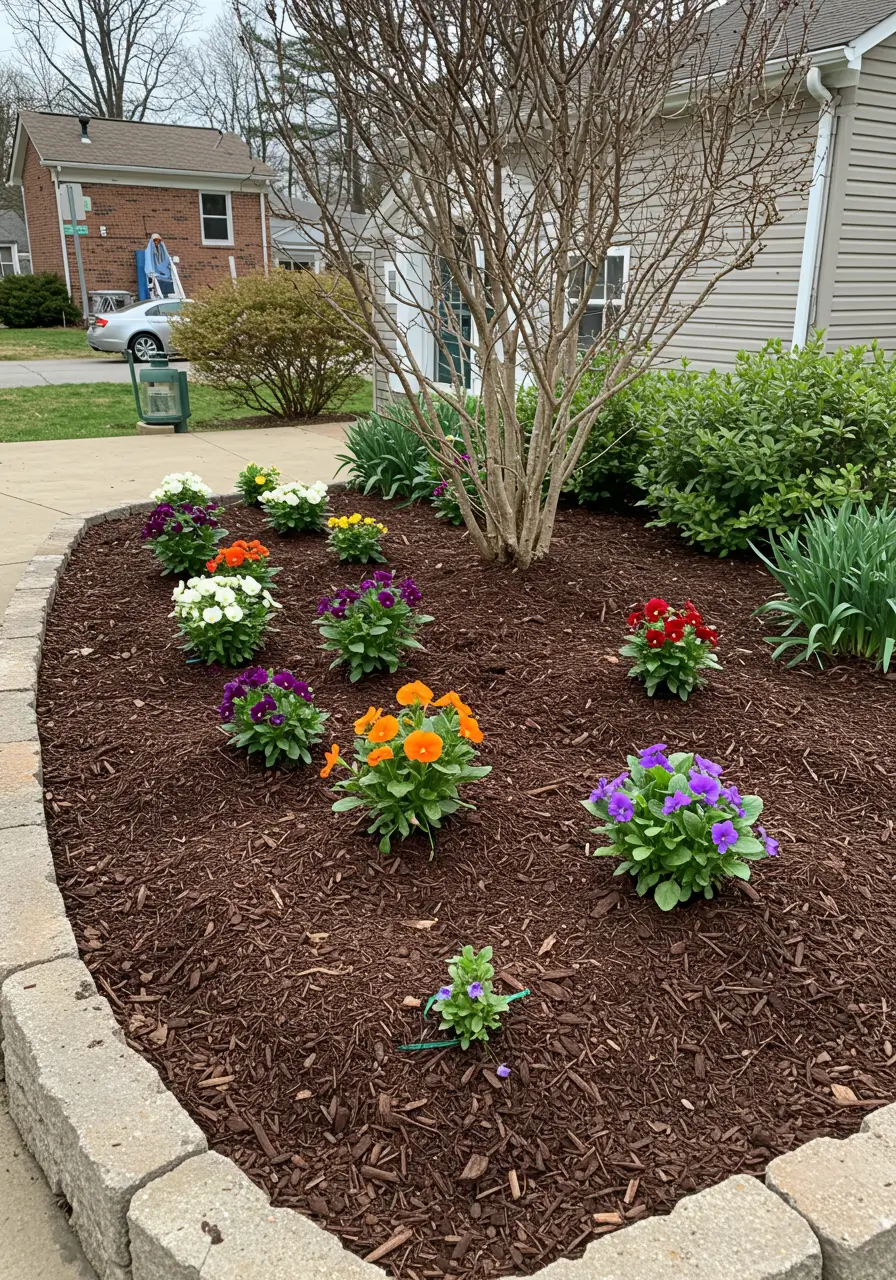
The Benefits of Mulching (Recap)
Moisture Retention:
Mulch acts like a blanket, reducing water evaporation from the soil surface, meaning you’ll need to water less frequently.
Weed Suppression:
A good layer of mulch blocks sunlight from reaching weed seeds, preventing many of them from germinating. It also makes any weeds that do sprout easier to pull.
Soil Temperature Regulation:
Mulch helps keep the soil cooler in summer and warmer in winter, protecting plant roots from extreme temperature fluctuations.
Improved Soil Health (Organic Mulches):
As organic mulches (like shredded bark, wood chips, compost) decompose, they add valuable organic matter and nutrients to the soil.
Reduced Soil Erosion and Compaction:
Mulch protects the soil surface from the impact of rain and reduces compaction.
Aesthetic Appeal:
Mulch provides a uniform, tidy background that makes your plants stand out and gives the flower bed a finished look.
Choosing and Applying Mulch
Popular Mulch Types:
– Shredded Hardwood Bark: Long-lasting, stays in place well, attractive dark brown color.
– Wood Chips/Nuggets: Also durable, available in various sizes and colors (natural, dyed brown/red/black).
– Pine Straw (Pine Needles): Lightweight, good for acidic-loving plants, attractive reddish-brown color, decomposes slowly. Popular in some regions.
– Compost: Can be used as a mulch (especially good for enriching soil) but may need replenishing more often as it incorporates into the soil.
– Shredded Leaves: Free, excellent soil conditioner as they decompose. Best to shred them first with a mower or shredder.
– Cocoa Bean Hulls: Attractive dark color, pleasant smell initially. Can be toxic to dogs if ingested in large quantities, so use with caution if you have pets.
– Gravel/Pebbles (Inorganic): Used for certain aesthetics (rock gardens, modern designs) or around heat-loving plants. Long-lasting but doesn’t improve soil.
Application Technique:
– Depth: Apply a layer 2-3 inches deep over the entire flower bed soil surface, around your newly planted flowers. Too thin won’t suppress weeds effectively; too thick can impede air/water flow.
– Keep Away from Stems/Crowns: Pull mulch back an inch or two from the base (crown) of each plant stem. Piling mulch directly against stems can trap moisture and lead to rot or disease.
– Even Coverage: Spread the mulch evenly for a consistent look.
Final Finishing Touches
Watering In:
After mulching, give the entire bed another gentle watering. This helps settle the mulch and provides moisture.
Clean Up:
Sweep any stray soil or mulch off surrounding paths or lawn areas.
Consider Decorative Elements (Optional):
You might add garden art, a bird bath, or decorative stones to further personalize your new flower bed, but keep it uncluttered to let the plants shine.
With mulching complete, your new flower bed is officially established! This final step in how to make a flower bed ensures its health and beauty while minimizing future maintenance.
Enjoying Your Beautiful New Flower Bed
Congratulations! By following these 7 simple steps – from thoughtful planning and site selection to careful planting and mulching – you’ve successfully learned how to make a flower bed and have created a beautiful new addition to your landscape. This space, born from your vision and effort, will provide seasons of color, attract beneficial pollinators, and offer a source of personal joy and connection with nature.
Remember that a flower bed is a living, evolving entity. Provide consistent care, especially during the first crucial weeks as your new plants establish their roots. Observe your plants, learn their needs, and don’t be afraid to make adjustments or try new things in subsequent seasons. Gardening is a continuous journey of learning and creation.
Now, step back, admire your handiwork, and most importantly, take the time to relax and enjoy the vibrant blooms and enhanced beauty your new flower bed brings to your outdoor oasis. You’ve transformed a patch of your yard into a place of life and color.
Frequently Asked Questions
1. What is the best time of year to make a new flower bed?
Spring and fall are generally the best times. In spring, the soil is warming up and typically moist, ideal for new plants to establish before summer heat. In fall, cooler temperatures and ample moisture help plants establish roots before winter, giving them a head start for spring growth. Avoid making new beds during extreme summer heat or when the ground is frozen.
2. How deep should I dig the soil for a new flower bed?
Aim to loosen and amend the soil to a depth of at least 8-12 inches. This provides ample room for most flower roots to grow and access nutrients and moisture. For plants with deeper root systems (like some perennials or small shrubs), digging even deeper (12-18 inches) can be beneficial if your soil allows.
3. Should I put landscape fabric under the soil in my flower bed to prevent weeds?
It’s generally not recommended to put landscape fabric under the soil in a flower bed intended for growing a variety of plants. While it might suppress weeds initially, it can hinder root growth, impede the movement of beneficial soil organisms (like earthworms), prevent organic matter (like decomposing mulch) from enriching the soil, and eventually, weeds often grow on top of or through tears in the fabric, making them harder to remove. Proper soil preparation and a good layer of mulch on top of the soil is a better long-term weed control strategy. Fabric is more suitable under gravel paths or inorganic mulches.
4. Can I make a flower bed directly on top of my lawn without removing the sod?
Yes, this is known as sheet mulching or lasagna gardening (as described in Step 3). You cover the existing lawn with layers of cardboard (to smother the grass), then add compost and mulch on top. You can plant directly into the compost layer after the grass underneath has died and started to decompose (which can take several months). This is a great no-dig, soil-building method but requires patience before planting.
5. How do I choose flowers that will bloom all season long in my new flower bed?
Select a variety of plants (annuals, perennials, small shrubs) with different bloom times. Read plant tags or research online to find out when each plant typically flowers in your region (early spring, mid-spring, early summer, mid-summer, late summer, fall). By choosing plants that flower in succession, you can ensure continuous color and interest in your flower bed from spring through frost. Consider foliage texture and color too for year-round appeal.
